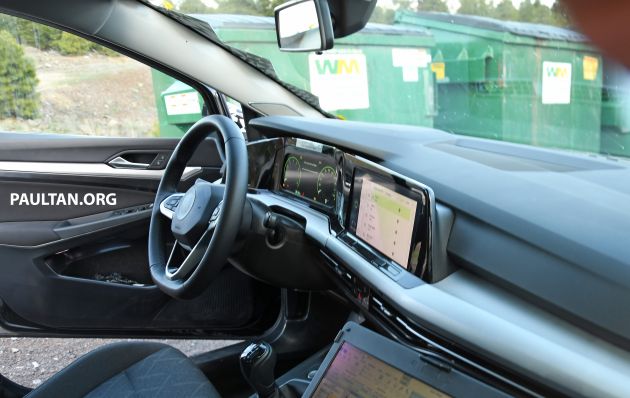The next-generation Volkswagen Golf GTE plug-in hybrid will offer two levels of output when it makes its debut, Volkswagen research and development board member Frank Welsch has told Autocar.
“Today’s GTI is 241bhp, so the GTE should also have 241bhp; (this way) the GTE is really a GTE,” Welsch said. There are customers who are content with the current car’s 201 bhp output, so that will be offered alongside the performance-oriented PHEV Golf, and which will appear to be a normal Golf without the GTE trim, he said.
This is as electrified as the Golf range will get; the full battery-electric role goes to the ID.3. This is similar to the product direction taken by Mercedes-Benz with the forthcoming S-Class and EQS, the former continuing to use both internal combustion and electrification, while the latter will be fully electric and based on a dedicated EV architecture.
Visually, the Mk8 Golf sports Volkswagen’s new logo, with the PHEV development car spotted here essentially undisguised. Inside, Autocar says that the next-generation hatchback is expected follow the emerging trend of doing without conventional switches, at least on higher-end versions, and quotes design chief Klaus Bischoff as saying that the Mk8 Golf’s interior will be a ‘total’ digital environment.
Here, touchscreens will to replace the conventional instrument cluster and climate controls, and even the headlight switch is likely to be replaced by a touchpad. “The new Golf will be everything people loved for years, but now made digital,” said Volkswagen marketing chief Jürgen Stackmann.
The Golf line-up is also set to be simplified, the report adds, with the model’s three-door and estate bodystyles most likely to be dropped, partly due to increasing demand for SUVs and crossovers. Volkswagen insiders told the magazine that the Golf Mk8 is aimed at luring customers who plan to downsize from larger premium models such as the Mercedes-Benz C-Class and BMW 3 Series.
The MK8 Golf will be an evolution of the current Mk7, and will continue to use the firm’s transverse layout MQB platform in updated guise. The current 1.5 litre TSI turbo petrol unit will be joined by a 1.0 litre three-cylinder and an all-new 1.5 litre diesel, the latter likely to be a 12V mild hybrid. This starter-generator setup is meant to reduce load on the engine and reduce NOx emissions, Autocar says.
A curious rumour, the magazine reported, is that the 1.0 litre units might not be turbocharged, and instead rely on direct assistance from a belt driven starter-generator motor (SGM). The idea is that the SGM will provide enough assistance for the entry-level engines, allowing the dismissal of the turbocharger and its associated plumbing, cooling and control systems.
Volkswagen will also reportedly invest in both 12V and 48V mild-hybrid systems, as the latter allows for more energy to be recuperated than 12V systems. Key to a 48V architecture in a more mainstream VW Group model like the Golf is a more compact, less expensive setup comprising a smaller DC/DC converter and a smaller lithium-ion battery, Autocar says. 48V mild-hybrid setups in the VW group have so far been used in premium models such as the Audi SQ5, S6 and S7.
The report adds that the MK8 Golf will pack permanent Internet connectivity with its new interior, which will allow 3D satellite mapping, hybrid radio reception (the audio system searches for the strongest signal, both analogue and digital) as well as the option of live information such as fuel pricing at nearby fuel stations.
This will also enable future implementation of predictive powertrain settings, such as switching to coasting when 3D topography info sees that the car is on a descent or approaching a junction. Further development of self-driving technologies is also expected, which will develop further from the current Traffic Jam Assist function in the Mk7 Golf.
Source: Read Full Article




